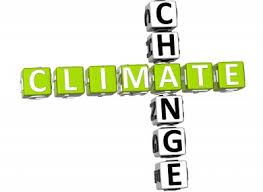February 3, 2014 – Last night my wife, dog Maya and I spent a wonderful evening with friends here in Fort Lauderdale. It was the occasion of the Superbowl and we celebrated it with pizza, salad and great conversation. As we watched the debacle on the television screen (Seattle kicked Denver’s butt 43-8) our conversation turned to global warming and climate change. You ask how that might have occurred. Well the game was so one-sided that I don’t think we paid attention much after the first half.
We were visiting with a doctor and his wife. What my doctor friend expounded as a man of science was rather interesting. He asked isn’t the amount of carbon on Earth pretty much a constant? And if so then how can we alter the carbon content of the planet? He went on, what about recent volcanic eruptions, wildfires and other non-human polluters in the atmosphere. Weren’t they contributing far more than anything we humans do? It’s not that he didn’t believe in climate change, he just seriously questioned the conclusions that what we were tracking was anthropocentric, that is, human-created.
These are great questions that deserve a response.
Is carbon constant here on Earth?
Absolutely with the exception that from time-to-time a carbonaceous meteorite strikes the planet to add to the total amount. But what is not constant is the distribution of the carbon. Carbon gets recycled. Sometimes it’s a gas. Sometimes it’s coal and oil. Sometimes it’s trees and plants. And sometimes it’s us. And when carbon is a gas it can fluctuate in terms of total atmospheric volume. The higher the carbon (CO2 and CO) in the air the greater the capacity of the atmosphere to retain the heat that comes along with solar radiation. That leads to a warmer atmosphere and all the consequences.
Some believe that more carbon in the air is good for plants. But as I wrote in yesterday’s blog, the offsetting rise in temperatures can play havoc with plants which may succumb to the heat or drought that can accompany an atmosphere with more CO2.
Yes it’s true that plants ingest CO2 and exhale free oxygen. And the carbon component of each inhalation helps build the plant allowing it to grow and flourish. And the oxygen of each exhalation ensures that we animals grow and flourish. So CO2 is important.
And when plants die the carbon they have stored doesn’t immediately get released to the atmosphere. For the most part it is trapped or sequestered becoming part of the soil, and eventually over time, solidifying as the mineral coal or turning into oil.
How can humans alter the carbon content of the planet?
We don’t. What we can do is alter the distribution of the carbon – how much remains in the ground, how much is vegetation, how much is tied up in animals, and how much is in the air and water. We do this by burning carbon for the energy we can derive from it. And over the last century-and-a-half, and particularly over the last 50 years we have been burning sequestered carbon at an unprecedented rate. How unprecedented you ask?
Well we have burned the carbon equivalent of more than half that which the Earth created back hundreds of millions of years ago during the geological period known as the Carboniferous. Much of that burned carbon has been retained in the atmosphere and much of the rest has been absorbed by the oceans. Hence an atmosphere with increased heat capacity (particularly in the lower part of the atmosphere because CO2 and CO are more dense than the surrounding air. And an ocean that is becoming more acidic as CO2 mixes with the surface water.
As we look back in the geological record of the planet, there is no equivalent period, so short, so sharp, that equals what we humans are doing today with our carbon burning ways. The consequences for the plants and animals of the planet is an environment that is increasingly unpredictable, and unlike natural events like volcanic eruptions, far more enduring in nature. For what we are emitting in the atmosphere today our children’s children’s children will inherit a climate far more disruptive than the polar vortices of this winter, and the decade-long droughts of the present.
Do volcanoes and wildfires cause climate change?
Absolutely! We know that the eruption of Krakatoa in the 1880s impacted the weather that followed for nearly a decade. We know that wildfires can turn day into twilight for cities downwind from these events. But there is no long-term impact for these occasional catastrophic events.
On the other hand we humans put billions of tons of carbon into the atmosphere every year as upkeep for our 21st century industrial society. And even though developed nations may be attempting to reduce their carbon footprint, the demand for more energy from those still developing is continuing to push up CO2 levels.
Today we are circa 400 parts per million (ppm) of this greenhouse gas. Sixty years ago we were at 350 ppm. Where will we be in 50 more years – at present rates somewhere between 430 and 480 ppm. And should we reduce our current burn rate, that CO2 level will remain high for a millennium if not longer.
No volcano can alter the atmosphere that way. No wildfire.
It was a great conversation we had last night – an important dialogue that I hope is occurring more often across the planet. Talking about climate change in an intelligent way is a powerful antidote to climate skepticism, and should fuel action to mitigate our collective behaviors.












